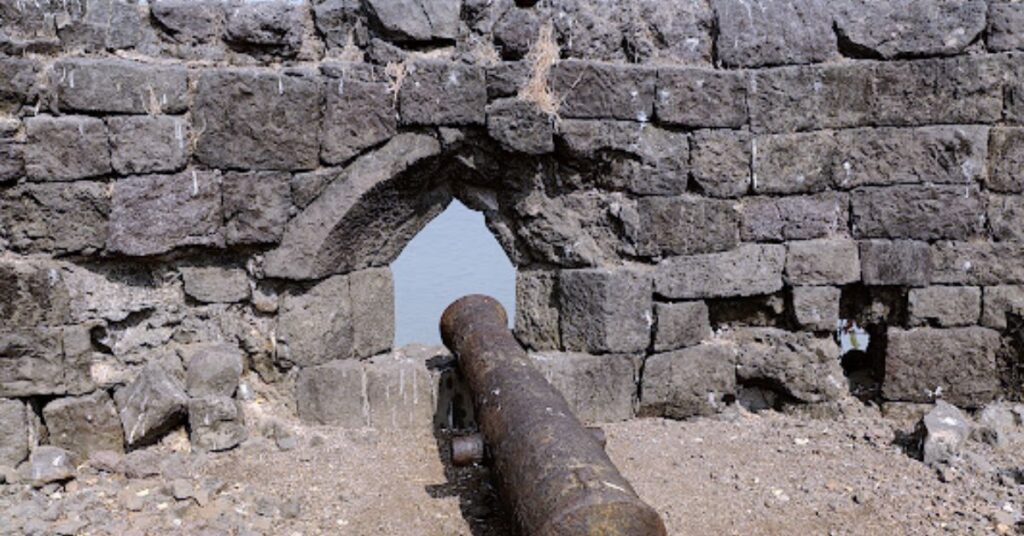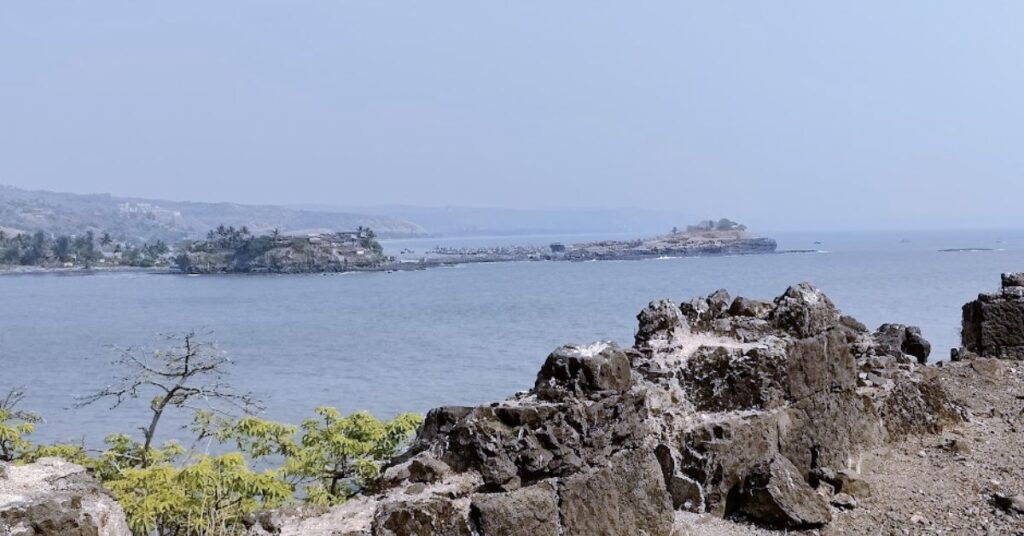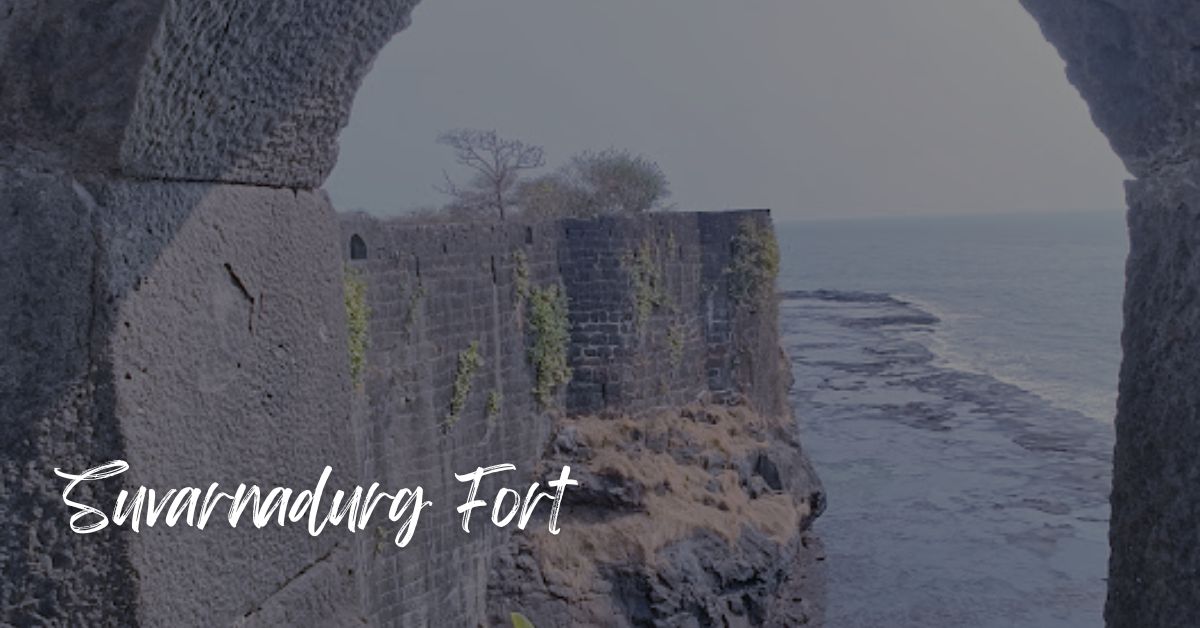The Ultimate Guide to Suvarnadurg Fort: Discovering a Maratha Masterpiece
If you’re looking for an unforgettable historical adventure, look no further than the Suvarnadurg Fort. Nestled along the Konkan coast in the Indian state of Maharashtra, this majestic fort promises an enthralling experience. In this guide, we’ll delve into the fort’s rich history, stunning architecture, and exciting activities it offers. So, let’s embark on this journey to uncover the secrets of Suvarnadurg Fort!

History of Suvarnadurg Fort
Maratha Empire
The Suvarnadurg Fort was constructed during the reign of the Maratha Empire, under the visionary leadership of Chhatrapati Shivaji Maharaj in the 17th century. Shivaji Maharaj, known for his exceptional military and administrative acumen, recognized the strategic importance of this location and ordered the construction of the fort to strengthen the Maratha’s control over the region.
The primary purpose of Suvarnadurg Fort was to defend the Maratha territory from the invading European powers, such as the Portuguese, Dutch, and British, who were vying for control over India’s western coast. The fort also served as a strategic vantage point for the Maratha navy, allowing them to monitor and control the maritime trade routes along the Konkan coast.
During its time under Maratha rule, Suvarnadurg Fort played a crucial role in several battles and military campaigns, ultimately contributing to the expansion and consolidation of the Maratha Empire.
British Rule
As the geopolitical landscape of India shifted in the 18th and 19th centuries, Suvarnadurg Fort changed hands several times. After the fall of the Maratha Empire, the fort was captured by the British in 1818, following the conclusion of the Third Anglo-Maratha War.
Under British rule, the fort was repurposed to serve as a garrison and prison for captured Indian soldiers and freedom fighters. Over time, the fort’s military significance waned, and it gradually fell into disrepair. However, the British recognized the historical importance of Suvarnadurg Fort and took steps to preserve its architectural integrity.

Location and Accessibility
Suvarnadurg Fort is located near the town of Harnai in the Ratnagiri district of Maharashtra. The fort is accessible via a 15-minute boat ride from the Harnai port. Khed is the nearest railway station. It is well-connected to major cities like Mumbai and Pune. From Khed, you can hire a taxi or take a bus to reach the Harnai port.
Architectural Features
Fortification
The fortification of Suvarnadurg Fort showcases the exceptional engineering prowess of the Maratha Empire. The fort’s defensive walls stretch around the entire island, providing an almost impregnable barrier against potential invaders. These walls, made of solid stone, have withstood the test of time and still stand tall today.
The fort also features a series of bastions and watchtowers that were strategically placed to offer unobstructed views of the surrounding sea. These bastions and watchtowers played a crucial role in defending the fort by allowing the Maratha soldiers to monitor enemy movements and launch counterattacks when necessary. The fortification was designed in such a way that any invading force would have to overcome multiple layers of defense before gaining entry into the fort’s inner sanctum.
Inner Structures
The inner structures of Suvarnadurg Fort reveal a glimpse into the daily life of the soldiers who once inhabited it. A well-organized storage system allowed for efficient use of the limited space within the fort. These spaces stored food, ammunition, and other essential supplies required by the soldiers.
The barracks within the fort provided accommodation for the soldiers stationed there. Built with stone walls and featuring small windows for ventilation, these barracks were designed to be both functional and secure. The fort also had water reservoirs, which were a vital source of fresh water for the inhabitants. These ingeniously designed reservoirs collect and store rainwater, ensuring a constant supply of water even during the dry months.
Within the fort’s premises, remnants of ancient temples dedicated to various deities can be found. These temples, built in the traditional Maratha architectural style, showcase intricate carvings and sculptures that reflect the region’s rich cultural heritage. These temples not only served as places of worship for the soldiers but also as a symbol of the spiritual connection between the fort and the people who lived there.
Overall, the fortification and inner structures of Suvarnadurg Fort provide a fascinating insight into the strategic and practical aspects of fort design during the Maratha period. The fort stands as a testament to the ingenuity and resilience of the Maratha Empire, which continues to inspire awe and admiration to this day.
Activities to Do
- Boating: Rent a boat and explore the serene waters surrounding the fort. Take in the stunning views of the fort from the sea while enjoying a peaceful ride on the Arabian Sea.
- Play with the waves: Take your time to unwind at the small shore at the entrance of the fort. The waves lash on this rocky shore creating music. Jump in and feel the titillating sensation of the waves hitting you. This will teleport you to a whole new world of serenity.
- Photography: The fort’s stunning architecture, combined with the breathtaking backdrop of the Arabian Sea, makes for perfect photo opportunities. Don’t forget to capture the mesmerizing sunsets that the fort has to offer.
Fort Exploration
Embarking on a journey to explore Suvarnadurg Fort promises an unforgettable experience that will transport you back in time. The fort’s intricate layout, hidden chambers, and winding staircases offer endless opportunities for discovery and adventure.
To begin your exploration enter through the fort’s main entrance, where imposing walls greet you. As you venture further into the fort, you’ll come across a labyrinth of narrow passages and tunnels, each with its own story to tell. The architects cleverly designed these passages. They confuse and deter invaders, and now serve as a thrilling challenge for curious explorers.
Take the time to examine the fort’s hidden chambers, which reveal secrets of its past. These chambers, once used as storage spaces, prisons, or meeting rooms, offer a glimpse into the lives of the soldiers who once inhabited Suvarnadurg Fort. Keep an eye out for fascinating inscriptions and carvings on the walls, which provide valuable information about the fort’s history and its former inhabitants.
The winding staircases of Suvarnadurg Fort are not just architectural marvels but also strategic elements of its design. Climb these staircases to reach the fort’s highest points, such as the watchtowers and bastions, where you can enjoy breathtaking views of the surrounding sea and the Konkan coastline. These vantage points also provide a unique perspective on the fort’s layout, allowing you to appreciate the ingenuity and foresight of its architects.
As you wander through the ancient corridors of Suvarnadurg Fort, take the time to immerse yourself in its rich history. Listen to the whispers of the past echoing through the walls and imagine the battles, victories, and defeats that unfolded within this majestic stronghold. With each step, you’ll be unraveling the fort’s history and forging a deeper connection with the legacy of the Maratha Empire.
Best Time to Visit
The ideal time to visit Suvarnadurg Fort is between October and February when the weather is pleasant, making it perfect for outdoor activities. During the monsoon season (June to September), the fort may be less accessible due to rough seas and heavy rainfall.
Nearby Attractions
Once you’ve finished exploring the Suvarnadurg Fort, don’t forget to check out other nearby attractions like:
- Harnai Beach: A pristine beach offering a tranquil atmosphere and picturesque views.
- Anjarle Beach: Another beautiful beach known for its white sands and clear waters.
- Kadyavarcha Ganpati: A historic temple dedicated to Lord Ganesha, situated atop a hill offering stunning views of the surrounding region.
Conclusion
Suvarnadurg Fort is a must-visit destination for history buffs, adventure seekers, and photography enthusiasts alike. Its rich heritage, breathtaking views, and the variety of activities it offers make it a perfect getaway for those looking to immerse themselves in a unique historical experience.
Also read the blog post on our bike ride to Suvarnadurg and the Wikipedia guide.







